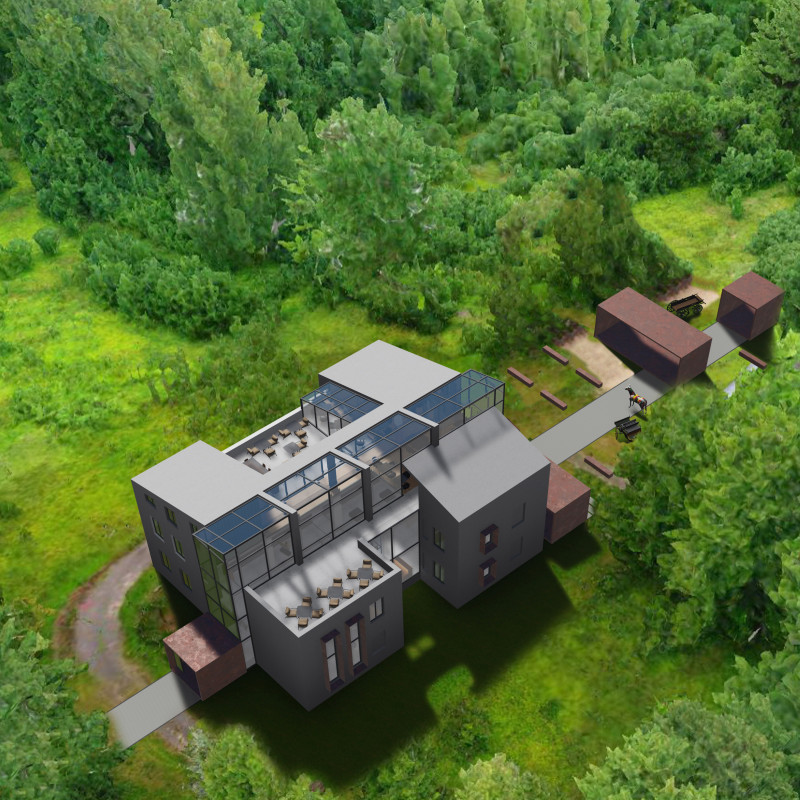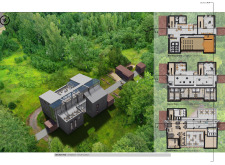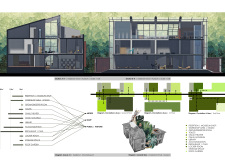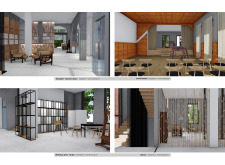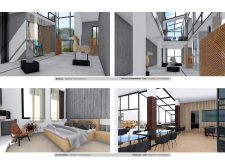5 key facts about this project
The InsideOut - Omuli Museum is designed to serve as a cultural center, fostering community engagement and artistic exploration. Located in an accessible area, it aims to connect the public with various forms of art and education. The design approach emphasizes clear organization and ease of movement, allowing visitors to navigate the space smoothly while enjoying a diverse range of activities.
Architectural Organization
The museum features three main levels: the Ground Floor, 1st Floor, and 2nd Floor, each with its specific purpose tailored to the museum's mission. On the Ground Floor, the Reception and Museum Shop create an inviting entrance for visitors. Close to these areas, the Workshop Area and Studio provide spaces for creative endeavors and educational programs, encouraging participation and learning.
Key Functional Spaces
Also located on the Ground Floor are the Groundskeeper Room, Toilets, and locker facilities, which support the museum's operational needs. The Omuli Theater serves as a venue for performances and events, adding to the cultural offerings of the museum. The Library offers a quiet space for research and reflection, enhancing the educational experience for visitors.
Circulation and Interaction
Efficient circulation is an important aspect of the museum's design. Circulation diagrams for each floor illustrate how visitors can easily navigate the different spaces. Accessibility and ease of movement are prioritized throughout the layout. Communal settings, including the restaurant and café, encourage social interaction and participation among visitors. The Roof Garden extends the museum's reach outdoors, providing an area for relaxation and connection with nature.
Architectural Details
Natural light plays a crucial role in creating a welcoming atmosphere in the museum. While specific materials used in the design are not mentioned in the presentation, the overall design suggests a focus on transparency and openness. A thoughtful balance between private and public spaces enhances the functionality of the museum, supporting its commitment to artistic and educational initiatives within the community.


